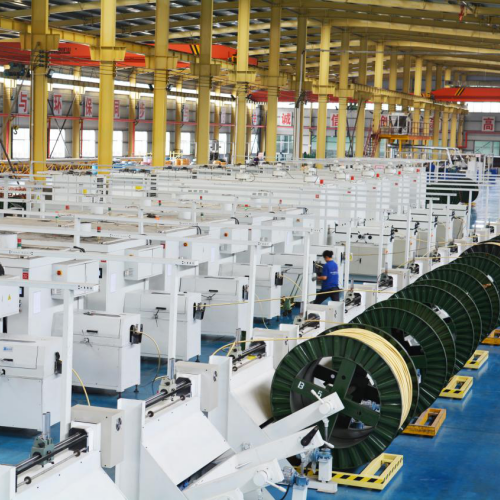335345435
des . 04, 2024 17:00 Back to list
hydraulic crimp hose fittings
Understanding Hydraulic Crimp Hose Fittings A Comprehensive Guide
Hydraulic systems are pivotal in various industries, including construction, manufacturing, and automotive, playing a vital role in the efficient transfer of power and fluid. One crucial component of these systems is hydraulic crimp hose fittings. These fittings are designed to provide a secure connection between hoses and other hydraulic components, ensuring the integrity and efficiency of the system. In this article, we will delve into the importance of hydraulic crimp hose fittings, their types, applications, and the crimping process.
What Are Hydraulic Crimp Hose Fittings?
Hydraulic crimp hose fittings are mechanical connectors used to join hydraulic hoses to various types of machinery and equipment. They typically consist of a fitting component that is permanently attached to the end of a hose through a crimping process. This method ensures a robust and leak-proof joint, which is critical for maintaining system pressure and avoiding fluid loss.
Importance of Crimp Hose Fittings
1. Leak Prevention One of the primary reasons for utilizing crimp hose fittings is their ability to prevent leaks. The crimping process creates a tight seal, significantly reducing the risk of fluid escape. This is essential for safety and operational efficiency.
2. Durability and Longevity Crimp fittings are designed to withstand the high pressures typical in hydraulic applications. Their robust construction ensures they can endure harsh environments, contributing to the overall longevity of the hydraulic system.
3. Ease of Maintenance In the event of a hose needing replacement, crimp fittings allow for easy and quick changes, minimizing downtime. This is particularly beneficial in industries where time is money.
4. Versatility Hydraulic crimp hose fittings are available in various sizes and configurations, making them suitable for a wide range of applications. From agricultural machinery to industrial equipment, these fittings can accommodate diverse hydraulic needs.
Types of Hydraulic Crimp Hose Fittings
There are several types of hydraulic crimp hose fittings, each designed for specific applications and requirements. Some of the most common types include
1. NPT (National Pipe Thread) Fittings These fittings have tapered threads that create a seal when tightened together. They are commonly used in various hydraulic applications due to their effectiveness in preventing leaks.
hydraulic crimp hose fittings

2. JIC (Joint Industry Council) Fittings JIC fittings have a 37-degree flare and are designed to provide a high-level seal. They are widely used in applications that require higher pressure and are compatible with an extensive range of hose sizes.
3. BSP (British Standard Pipe) Fittings Similar to the NPT fittings, BSP fittings come in both tapered and parallel threaded varieties. They are prevalent in international applications where British standards are adhered to.
4. Metric Fittings These fittings are used in systems designed to meet metric specifications. They are essential in European equipment and machinery, ensuring compatibility across different international standards.
The Crimping Process
The crimping process involves the use of a specialized tool that compresses the fitting onto the hydraulic hose. This tool must be calibrated correctly to ensure that the fitting is crimped with the appropriate force, achieving a reliable seal. The steps typically include
1. Preparation of the Hose The hose must be cut to the desired length, with the end cleaned and checked for any damage.
2. Assembly of the Fitting The fitting is inserted into the hose end, ensuring that it reaches the appropriate depth for crimping.
3. Crimping The crimping tool is then used to compress the fitting onto the hose. This process calls for precision; incorrect crimping can lead to hose failure.
4. Quality Control After crimping, the assembly is tested to ensure that there are no leaks and that it meets the required specifications.
Conclusion
Hydraulic crimp hose fittings play a critical role in the efficiency and reliability of hydraulic systems across numerous industries. Their ability to prevent leaks, their suitability for high-pressure applications, and the ease with which they can be maintained make them an essential component in any hydraulic setup. By understanding the types of fittings available and the crimping process, professionals can ensure that their hydraulic systems operate safely and effectively, ultimately contributing to enhanced productivity and performance. Whether you are in construction, manufacturing, or any industry utilizing hydraulic power, the significance of quality crimp hose fittings cannot be understated.
-
SAE 100 R17 Black Smooth Cover Hydraulic Hose
NewsMar.07,2025
-
SAE 100 R17 Black Smooth Cover Hydraulic Hose
NewsMar.07,2025
-
SAE 100 R17 Black Smooth Cover Hydraulic Hose
NewsMar.07,2025
-
SAE 100 R17 Black Smooth Cover Hydraulic Hose
NewsMar.07,2025
-
SAE 100 R17 Black Smooth Cover Hydraulic Hose
NewsMar.07,2025
-
steel wire braided hydraulic hose
NewsMar.07,2025



